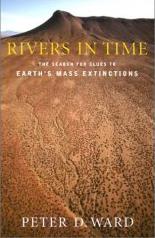Unlike Charlie Stross I was less than impressed with this article on The Top Ten Things Environmentalists Need to Learn. Perhaps that is because it reminded me too much of the sort of thing Jerry Pournelle used to write in his science columns for semi-obscure science fiction magazines back in the late seventies. It pays some lip service to the idea that “maintaining the environment is a critical issue” but then argues in bad faith, more interested in attacking environmentalists than in contributing to solutions. Take for example, the first thing “environmentalists need to learn”:
10. Go after pollution sources with the highest benefit/cost ratio, not those which are most noticeable – If you are attempting to make a difference in the world, you should start with the largest problems with the simplest solutions and the least cost in remedying.
For example, underground coal fires produce as much CO2 as all the light cars and trucks in North America and most of those in Europe. The cost of developing a method of fighting such fires and implementing it is likely very low compared to the benefit especially in the context of the amount of effort which has gone into reducing the pollution from cars and trucks.
Now that coal fire example makes me suspicious, as it’s just the kind of pat factiod that appeals to the inner contrarian in all of us. What’s stated here is that coal fires are as big a problem as CO2 emitted by cars, what’s implied is that those silly enivronmentalists are not doing anything about the former but are only concerned with the latter, hence they are hypocrites and can be ignored. Unspoken is the assumption that as long as these coal fires are going on, limiting CO2 emission from traffic is pointless.
But is it actually true that underground coal fires contribute as much CO2 as “all the light cars and trucks in North America and most of those in Europe”? No figures or references are given, which doesn’t strengthen the author’s case. The Encyclopedia of Earth article on
carbon dioxide says 24% of manmade CO2 emissions is attributable to transport worldwide, while its coal fires article says that “according to most recent estimations coal fires in China contribute about 0.1% to 0.2% of the annual human induced CO2 emissions globally”. There seems to be some sort of mismatch then, though of course the figure of 0.2% is only for China (the world’s largest coal user) while the 24% of transport worldwide needs to be broken down to “all the light cars and trucks in North America and most of those in Europe” to be able to truly compared the two figures. Nevertheless, a case can be made for the author having overstated the contribution of coal fires to manmade CO2 emissions…
But even if the figure was comparable, does this mean tackling underground coal fires is more cost effective than limiting the emissions put out by cars? Not necessarily. Underground coal fires are partially a natural phenomenon, with some having been burning for thousands of years,
while the most famous manmade fire, in Centralia, Pennsylvania, has been burning for some 45 years. By any measures they’re hard and costly to put out, requiring huge investments; according to an article in The Smithsonian putting out the fire in Centralia would’ve cost as much as 660 million dollars.
Producing more fuel-efficient cars suddenly looks a lot more affordable compared to those numbers, especially since a lot can be done without requiring new, exotic technology. Just switching from using inefficient types of car (the infamous Chelsea tractor, or SUV) to existing, more energy efficient cars would help. More and better public transport as an alternative to car use is another obvious measure to limit CO2 emissions. And of course, it’s perfectly possible to both invest in fighting underground coal fires, as is actually already happening (see the Smithonian article) and more fuel efficient cars.
So yeah, if the first bullet point in this essay is already this dishonest, I’m skeptical about the rest of the article, especially in the context of the rest of the blog, which seems largely dedicated to showing how silly and stupid environmentalists are.
